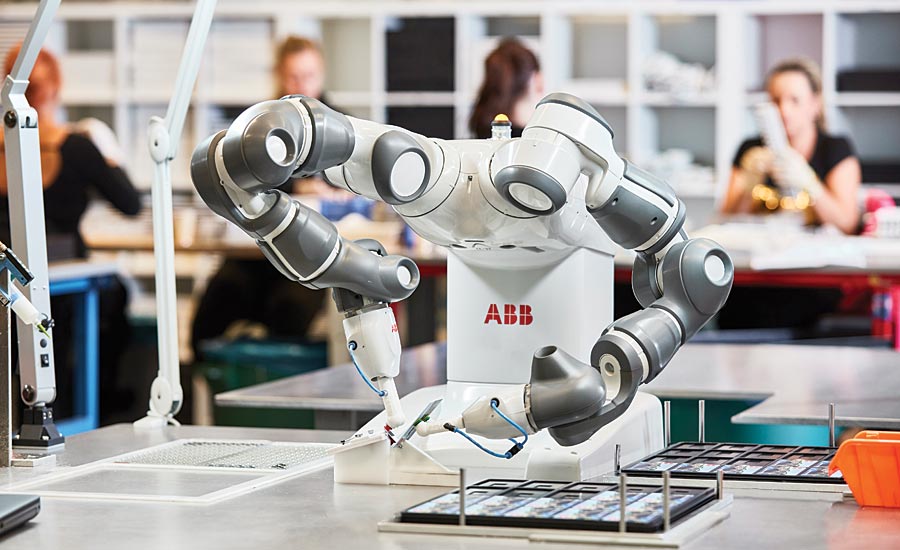Quality control is a critical aspect of manufacturing that ensures products meet the highest standards of excellence. Traditional quality control methods, often reliant on human inspection, have paved the way for more advanced technologies. Enter collaborative robots, or cobots—an innovation that has significantly transformed quality control processes in modern manufacturing. This article explores how cobot arms enhance quality control through precision, efficiency, and adaptability, reshaping the landscape of manufacturing.
Understanding Cobot Arms
Cobot arms are a subset of robotics specifically engineered for collaboration with human workers. They are characterized by their user-friendly interfaces, lightweight design, and inherent safety features. Unlike traditional robots that operate in isolation, cobots are designed to integrate seamlessly into existing workflows.
While industrial robots excel in high-speed, high-volume tasks, cobots are more versatile and adaptable. Cobots are generally easier to program and reconfigure, allowing them to handle a variety of tasks and products without extensive downtime or retraining.
Cobot arms come equipped with advanced sensors and feedback systems that enable precise control and real-time adjustments. Their safety features, such as collision detection and force limiters, ensure safe interaction with human operators, enhancing overall workplace safety.
Enhancing Precision and Accuracy
Cobot arms are engineered for exceptional precision in manufacturing tasks. Their advanced control systems and sensors allow for meticulous handling of components, ensuring that each product meets stringent quality standards. This precision is particularly valuable in tasks such as assembly, where even minor deviations can impact product functionality.
The integration of sensors in cobot arms provides continuous feedback on position, force, and speed. This real-time data enables cobots to make instantaneous adjustments, maintaining high levels of accuracy throughout the production process. For example, in quality inspection, sensors can detect minute defects that might be missed by the human eye.
Increasing Efficiency and Reducing Human Error
Cobot arms excel at automating repetitive tasks, freeing human workers from monotonous and often error-prone activities. This automation not only speeds up the production process but also ensures that each task is performed with consistent accuracy, reducing the risk of errors.
By taking over tasks that are prone to human error, cobots contribute to more reliable quality control outcomes. For instance, in tasks requiring high precision, such as calibrating equipment or inspecting minute details, cobots minimize variability and ensure uniform quality across products.
Cobot arms can operate continuously without breaks, significantly increasing production rates. Their ability to work alongside human operators allows for a more streamlined workflow, where cobots handle repetitive or complex tasks while humans focus on higher-level decision-making and oversight.
Adaptability to Diverse Manufacturing Environments
One of the standout features of cobots is their flexibility. They can be easily reconfigured to handle different products and tasks, making them ideal for dynamic manufacturing environments. Whether it’s switching between different assembly processes or adapting to new product lines, cobots offer unparalleled versatility.
Programming and reprogramming cobots is a straightforward process, often requiring minimal technical expertise. This ease of reconfiguration allows manufacturers to quickly adapt to changing production needs or introduce new products without significant downtime.
Cobot arms are designed to integrate seamlessly with existing manufacturing systems and technology. Their ability to work alongside traditional machinery and software ensures a smooth transition to more advanced quality control processes without disrupting established workflows.

Improving Worker Safety and Ergonomics
Unlike traditional robots that operate in isolation, cobots are built to work collaboratively with human operators. This collaborative approach not only enhances productivity but also promotes a safer work environment. Cobots can take on hazardous or physically demanding tasks, reducing the risk of injury for human workers.
By handling repetitive or strenuous tasks, cobots alleviate physical strain on human workers. This ergonomic improvement helps prevent musculoskeletal disorders and enhances overall worker well-being. For example, in tasks involving heavy lifting or precision placement, cobots take on the bulk of the workload. For some manufacturers of metal products, the use of a welding robot that specialises in the process can also alleviate any potential workplace injuries.
Cobot arms are designed with ergonomic considerations in mind, including adjustable workstations and user-friendly interfaces. These design features ensure that human operators can interact with cobots comfortably and safely, further enhancing workplace safety and efficiency.
Cost-Effectiveness and ROI
While the initial investment in cobot arms may be significant, the long-term savings often outweigh the costs. The increased efficiency, reduced error rates, and enhanced precision contribute to substantial cost savings over time. Manufacturers can expect a favorable return on investment (ROI) as cobots improve quality control processes and boost production rates.
Cobot arms help reduce quality control costs by minimizing the need for manual inspection and rework. Their ability to perform tasks with high accuracy and consistency reduces the incidence of defects and the associated costs of reprocessing or scrapping faulty products.
Conclusion
Cobot arms have revolutionized quality control in manufacturing by offering unparalleled precision, efficiency, and adaptability. Their collaborative nature and advanced technology address many of the challenges faced by traditional quality control methods, providing a compelling solution for modern manufacturing needs. As the industry continues to evolve, cobots are set to play an even more prominent role, driving innovations and improvements in quality control processes. Manufacturers looking to enhance their quality control efforts should consider integrating cobots into their operations, embracing the future of robotics in manufacturing.




:max_bytes(150000):strip_icc()/alekon-pictures-yj4kwA4h_Ms-unsplash-230509491f114970902d0e9aefb37850.jpg)






